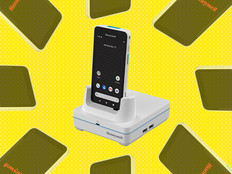Nokia’s Smart Thermometer Offers Physicians, Patients a Window into Flu Tracking
Ladies and gentlemen, ready your thermometers.
With flu medications only effective when taken within the first 36 to 48 hours that a person experiences flu symptoms, it can often be difficult for a clinician to know whether or not to prescribe medication — or which course of action to take for each patient.
Moreover, oftentimes flu symptoms overlap with other viruses, or patients simply can’t remember how long they’ve been experiencing symptoms. With preliminary data from the Centers for Disease Control and Prevention suggesting that the 2018 flu season may be worse than the 2009 season — when the swine flu pandemic strain swept the country — knowing how to best distribute much-needed resources can be key to fighting the flu effectively.
Luckily, we live in a connected health era and smart thermometers with symptom-tracking applications, such as the Nokia Thermo (previously Withings), can offer physicians and patients a better window into flu symptoms.
SIGN UP: Get more news from the HealthTech newsletter in your inbox every two weeks!
Individual Care Gets a Boost with the Nokia Thermo App
Tracking an individual’s symptoms with precision is always difficult.
This is where smart thermometers step in to fill the gaps. Much like how wearable biometric sensors are being used to track user activity and report it to a physician to create a fuller picture of health for each person, a connected thermometer can bridge the gap between at-home and medical care.
The Nokia Thermo, for instance, uses 16 infrared sensors to take more than 4,000 readings and provide an accurate temperature reading in just two seconds. Users can then sync the temperature data with the Nokia Thermo app over Bluetooth or Wi-Fi to create a personal “temperature diary.” This diary offers users a simple analysis of their readings as well as a way to track related information, such as medications and symptoms.
Importantly, that history can be shared with a patient’s doctor at any time with one click, giving the physician a complete picture of the user’s app-reported health.
“The ability to share your temperature diary with your doctors provides a great advantage for information sharing and gives people more knowledge about their own overall health,” a Nokia spokesperson tells HealthTech. “Through your diary, doctors have access to a full picture of your recent readings, your symptoms and any medications you’re taking, allowing them to make a better-informed diagnosis. With the ability to share your temperature diary at the click of a button, you can keep your doctor continually updated on your condition.”
Smart Thermometer Flu Statistics Data Speeds Tracking
Fever readings from smart thermometers can also be anonymously used by the healthcare community at large to better track and understand the spread of disease across the country.
Digital data from search engines and electronic medical records is already helping public health organizations better understand the flu’s reach in real time and how to best distribute resources.
Smart thermometer data is set to play its role in better tracking as well. A recent study published by Oxford University Press for the Infectious Diseases Society of America found that smartphone-driven apps linked with connected thermometers “significantly improved forecasts” of the flu “up to three weeks in advance,” of traditional readings.
This could lead to a sea change in how healthcare organizations tackle flu season.
Spencer Fox is pursuing a doctorate at the University of Texas in Austin and published research last fall on a computational model that explains why pandemics come at the end of flu season. In a previous interview with HealthTech, he explained the importance of being able to track the flu earlier.
“Many of the interventions that public health officials run are in anticipation of flu season. So, if they know flu season is going to start early, they can start their public health awareness campaigns earlier. They can try to get people vaccinated and aware before the season happens. “If they know it’s going to be a large flu season, they can allocate their resources accordingly,” Fox said.








